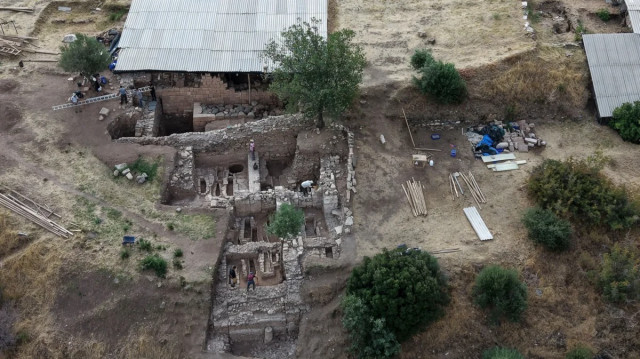
Palace in Sardis, once Lydian capital, was found 8 meters underground, beneath Persian, Hellenistic, Roman, and Byzantine layers
Archaeologists have discovered the remains of a Lydian palace dating back to the 8th century B.C. in the ancient city of Sardis, a UNESCO World Heritage Site in western Türkiye.
The site, in Manisa province’s Salihli district, was once the capital of the Lydian Kingdom and is known as the place where coins were first minted under state guarantee.
Excavations, ongoing for more than a century, are led by Nicholas Cahill of the University of Wisconsin.
"Historians once thought the Lydians only began urbanization in the 7th century B.C. and had lived in villages before that. These findings prove otherwise—Sardis was already a major monumental city in the 8th century B.C. The terrace system began then, showing the Lydians were an Anatolian civilization looking eastward, not a Greek one." Cahill told Anadolu.
He said the palace was found about eight meters underground, beneath Persian, Hellenistic, Roman, and Byzantine layers.
The structure’s stone walls are 1.5 to 2 meters thick and stand more than 6 meters high.
Artifacts uncovered include about 30 bronze arrowheads, human skeletal fragments, and nine silver coins, among the world’s oldest known, dating to the early 6th century B.C.
Cahill added that this year’s excavations are now complete, and work will resume next season.







